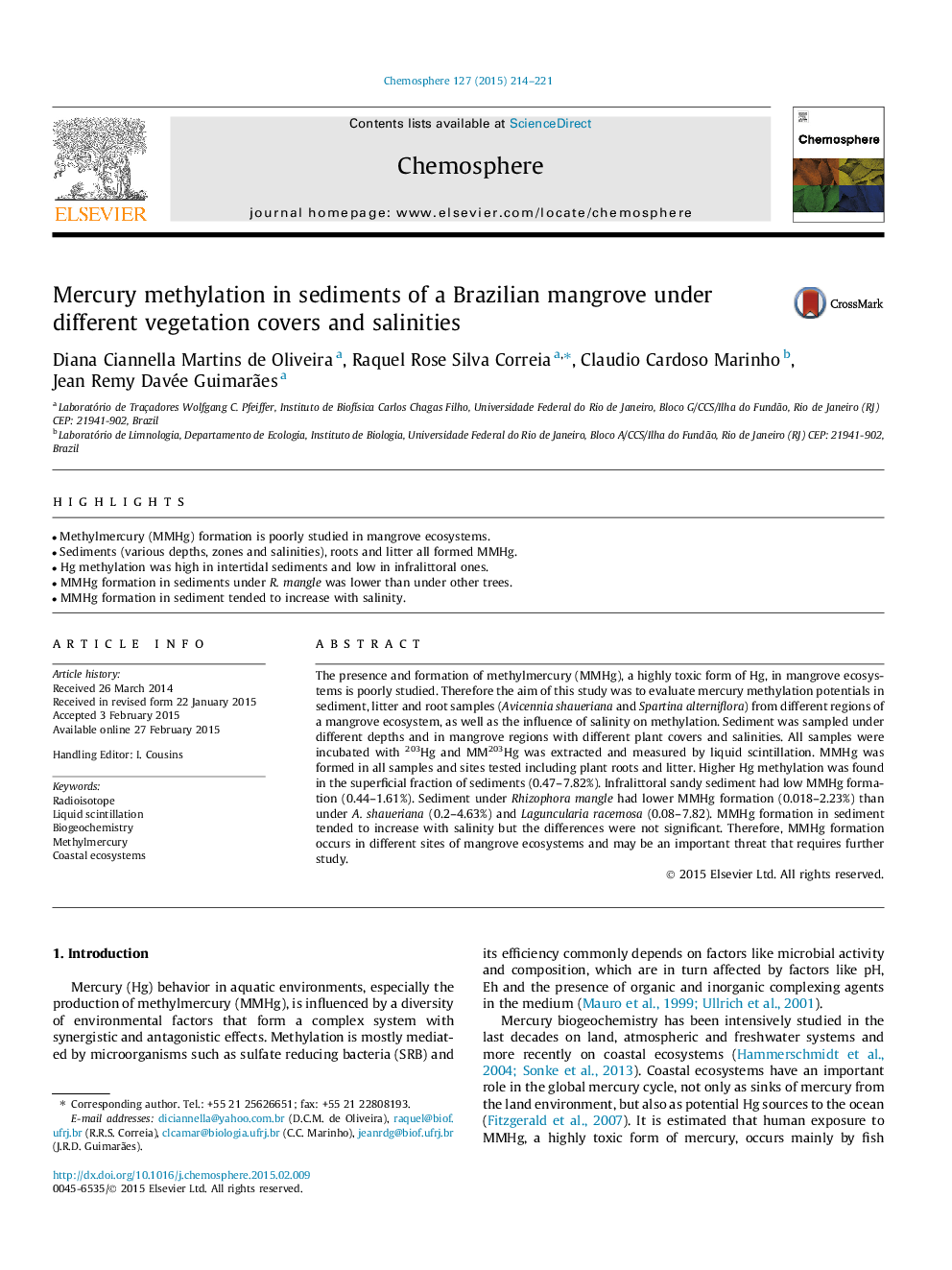| کد مقاله | کد نشریه | سال انتشار | مقاله انگلیسی | نسخه تمام متن |
|---|---|---|---|---|
| 4408541 | 1618844 | 2015 | 8 صفحه PDF | دانلود رایگان |
• Methylmercury (MMHg) formation is poorly studied in mangrove ecosystems.
• Sediments (various depths, zones and salinities), roots and litter all formed MMHg.
• Hg methylation was high in intertidal sediments and low in infralittoral ones.
• MMHg formation in sediments under R. mangle was lower than under other trees.
• MMHg formation in sediment tended to increase with salinity.
The presence and formation of methylmercury (MMHg), a highly toxic form of Hg, in mangrove ecosystems is poorly studied. Therefore the aim of this study was to evaluate mercury methylation potentials in sediment, litter and root samples (Avicennia shaueriana and Spartina alterniflora) from different regions of a mangrove ecosystem, as well as the influence of salinity on methylation. Sediment was sampled under different depths and in mangrove regions with different plant covers and salinities. All samples were incubated with 203Hg and MM203Hg was extracted and measured by liquid scintillation. MMHg was formed in all samples and sites tested including plant roots and litter. Higher Hg methylation was found in the superficial fraction of sediments (0.47–7.82%). Infralittoral sandy sediment had low MMHg formation (0.44–1.61%). Sediment under Rhizophora mangle had lower MMHg formation (0.018–2.23%) than under A. shaueriana (0.2–4.63%) and Laguncularia racemosa (0.08–7.82). MMHg formation in sediment tended to increase with salinity but the differences were not significant. Therefore, MMHg formation occurs in different sites of mangrove ecosystems and may be an important threat that requires further study.
Journal: Chemosphere - Volume 127, May 2015, Pages 214–221
